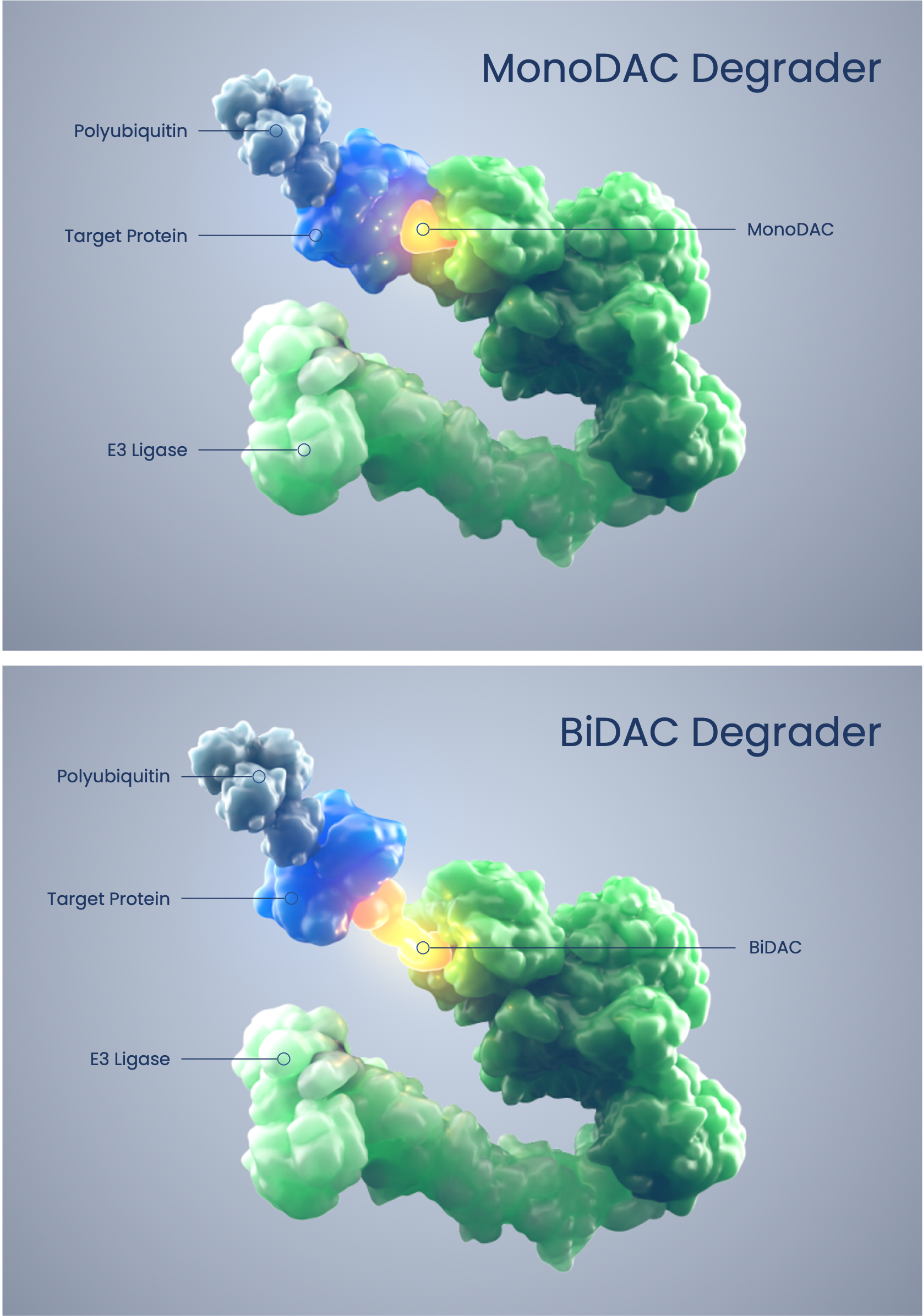TPD the C4T Way
Since our founding in 2015, we have established C4T as a leader in targeted protein degradation science (TPD), with a world-class platform shown to produce oral medicines that are highly active against their desired targets. We are progressing targeted oncology programs through clinical studies and leveraging our TORPEDO® platform to efficiently design and optimize small-molecule medicines to address difficult-to-treat diseases.
Key elements of our approach to TPD include:
- Focus on catalytic efficiency
- Investment in Cereblon as E3 ligase
By focusing on catalytic efficiency and leveraging Cereblon, we have built capabilities unique to the TPD field. At C4 Therapeutics, we can:
- Design, analyze and predict degrader performance
- Develop MonoDAC® and BiDAC™ degraders
